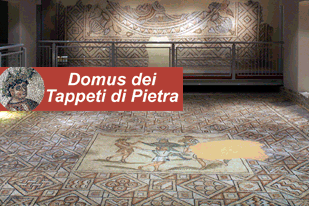San Nicolò, Ravenna in Dante's era




San Nicolò, ex deconsecrated church in Ravenna. Hotels near San Nicolò in Ravenna.
Photo: 1)the San Nicolò façade, 2)the side of the church with the entry of the "Cavallerizza", 3)the cloister of Augustinians at San Nicolò, 4)the cloister of Augustinians at San Nicolò
Together with the mendicant orders, the Augustinian hermit order established itself in Ravenna in the I3th century. They selected there base as being the ancient church of San Nicolò in Fossula and they built the monastery, alongside it, built around two cloister and which today houses the headquarters of the financial police.
The church was rebuilt in 1364, in the same Gothic style that it still maintains today. The interior which consists of a single nave, was embellished with wall paintings. Although only a few parts remain, they together with the church, form one of the many testimonies of the facelift given to the city during the domination of the Da Polenta.
The frescoes show evidence of the influence of the styles of the riminese school and, even more, to the Bolognese school. Saint Gorge and the dragon and the baptism of a saint are reminiscent of the paintings by Vitale da Bologna in Pomposa towards the middle of the century. At that time also restoration and embellishment work was carried out on the nearby Basilica of Sant'Agata Maggiore, which is located in the parallel via Mazzini, right in front of Saint Nicolò.
At the time there was a large gap between the two churches, where the waters of the Padenna canal flowed. Today only a few fragments remain of the new paintings that decorated the walls and the apse of the most ancient basilica. However they are sufficient to reveal the hand of mature artists, perhaps the same as those that decorated the church of San Nicolò and in numerous other Ravenna churches of the time.
The church of San Nicolò was gradually embellished with numerous paintings, which are today exhibited in the town art gallery, as well as new Baroque frescoes, the work of Cesare Pronti, who was an Augustinian and pupil of Guercino, who in the second half of the 17th century, produced many paintings for various Ravenna churches.
Following Napoleonic confiscation, the spacious nave of San Nicolò was transformed into a military riding school and it was used for this purpose until the last world war. This is why the church is still known as the "la Cavallerizza" (The riding school).
Prof. Gianni Morelli
The pleasure of fine accommodation in the centre of Ravenna: we recommend the Fabbri hotels for a pleasant stay as follows:
The Centrale Byron hotel, 3-star, in the centre of Ravenna, close to the San Nicolò church ;
The Bisanzio Hotel, 4-star hotel in the centre of Ravenna, close to the San Nicolò church ;
Once you have reached the hotel and parked your car, forget it and walk everywhere, because everything is within walking distance.
The railway station is near our hotels and within walking distance of them.
© reserved copyright
.





